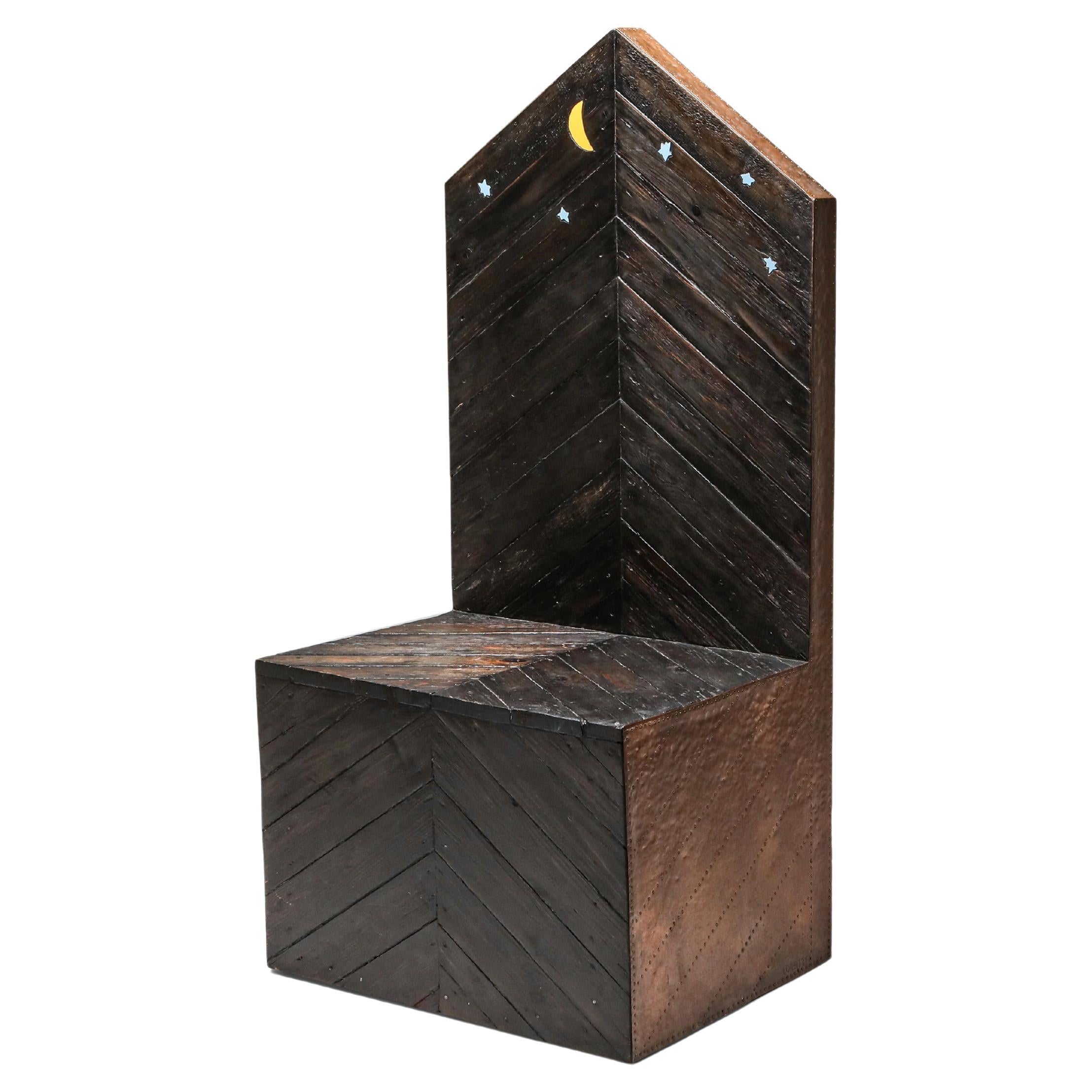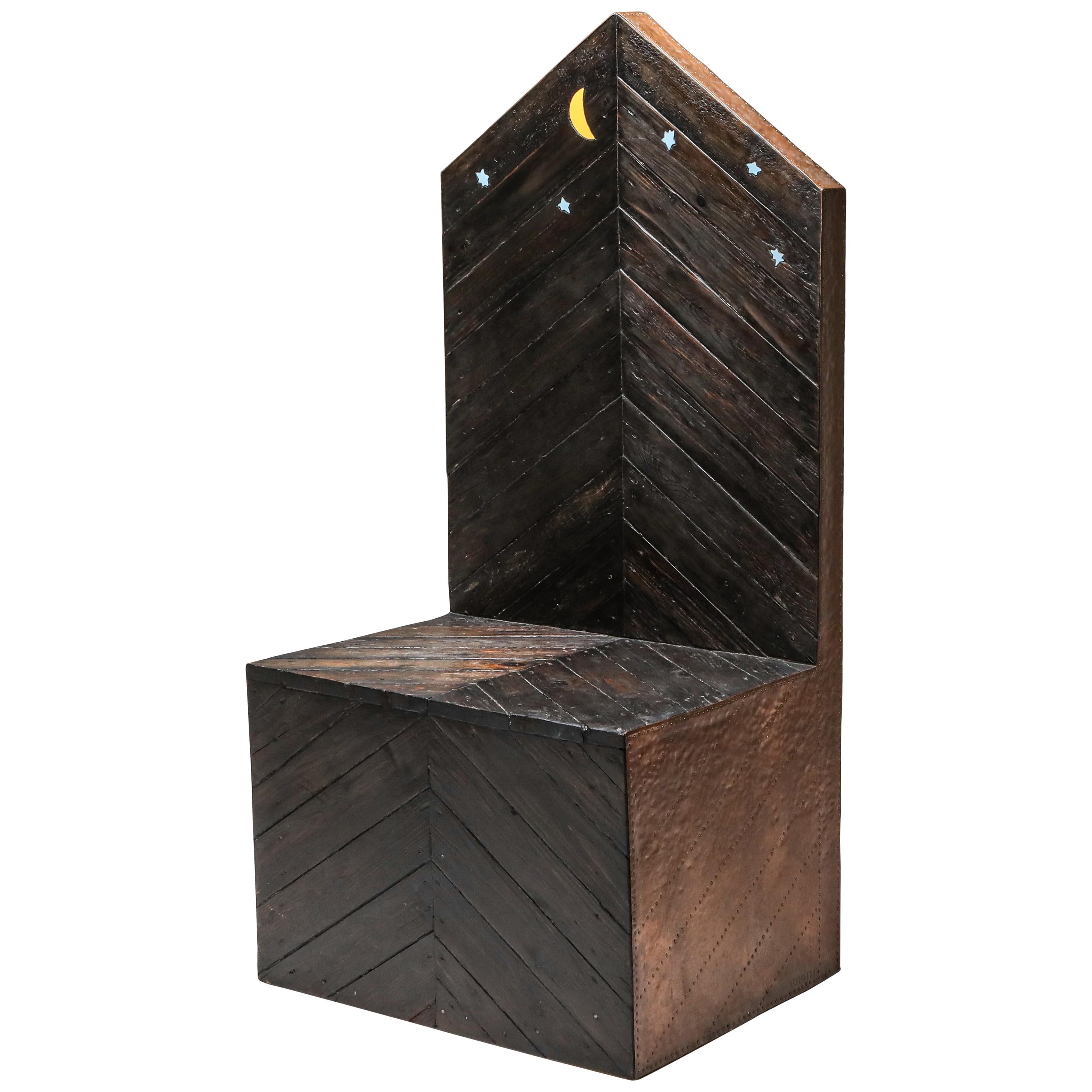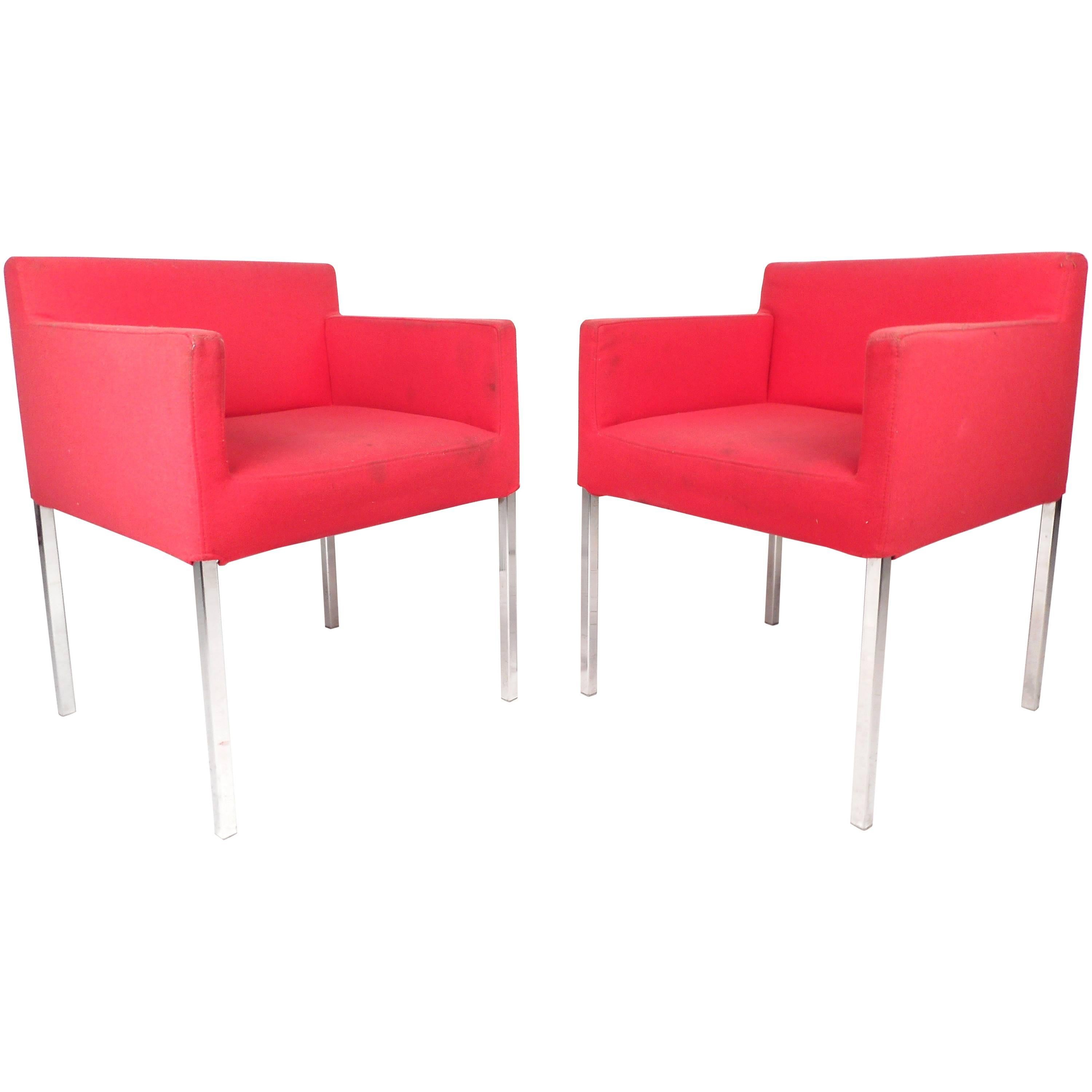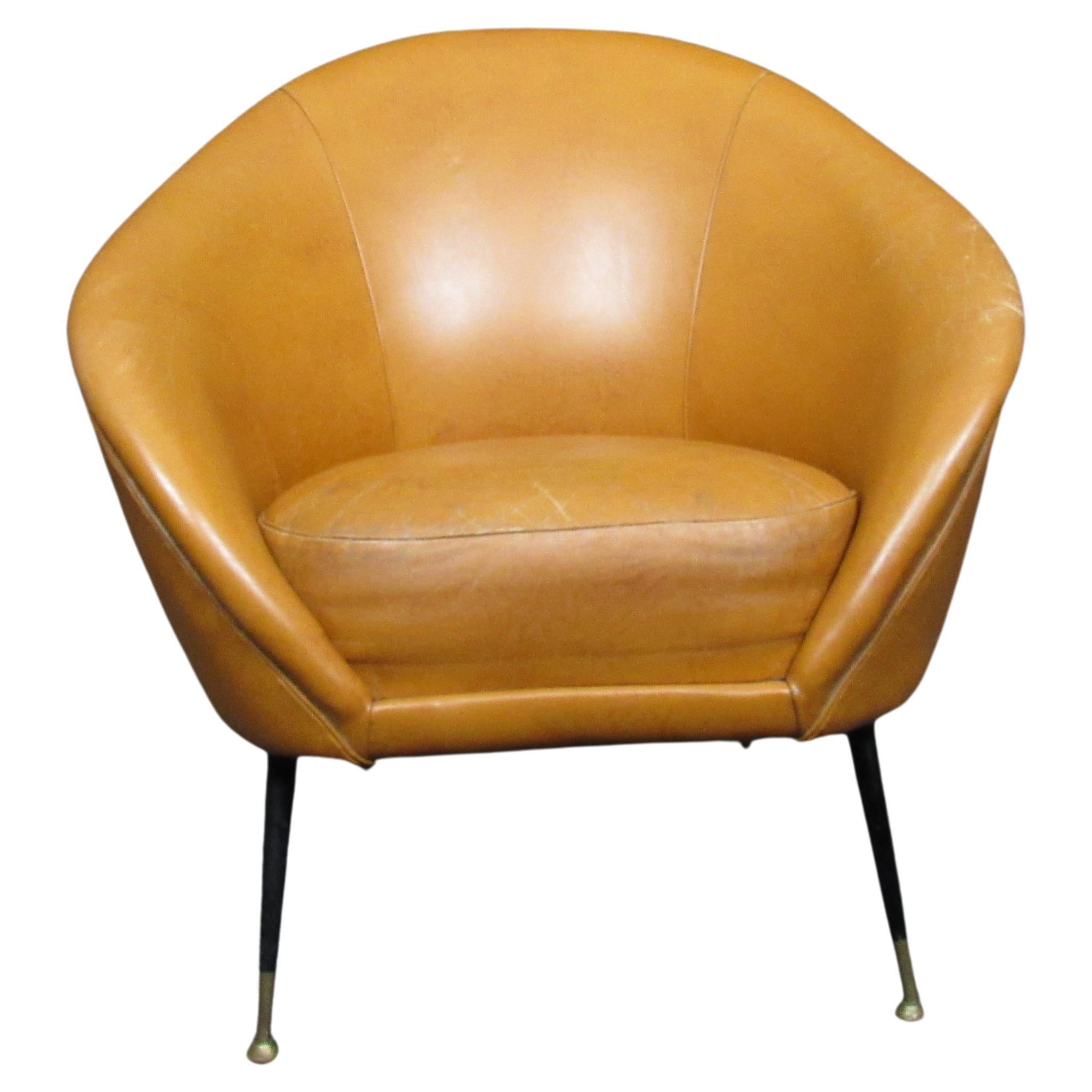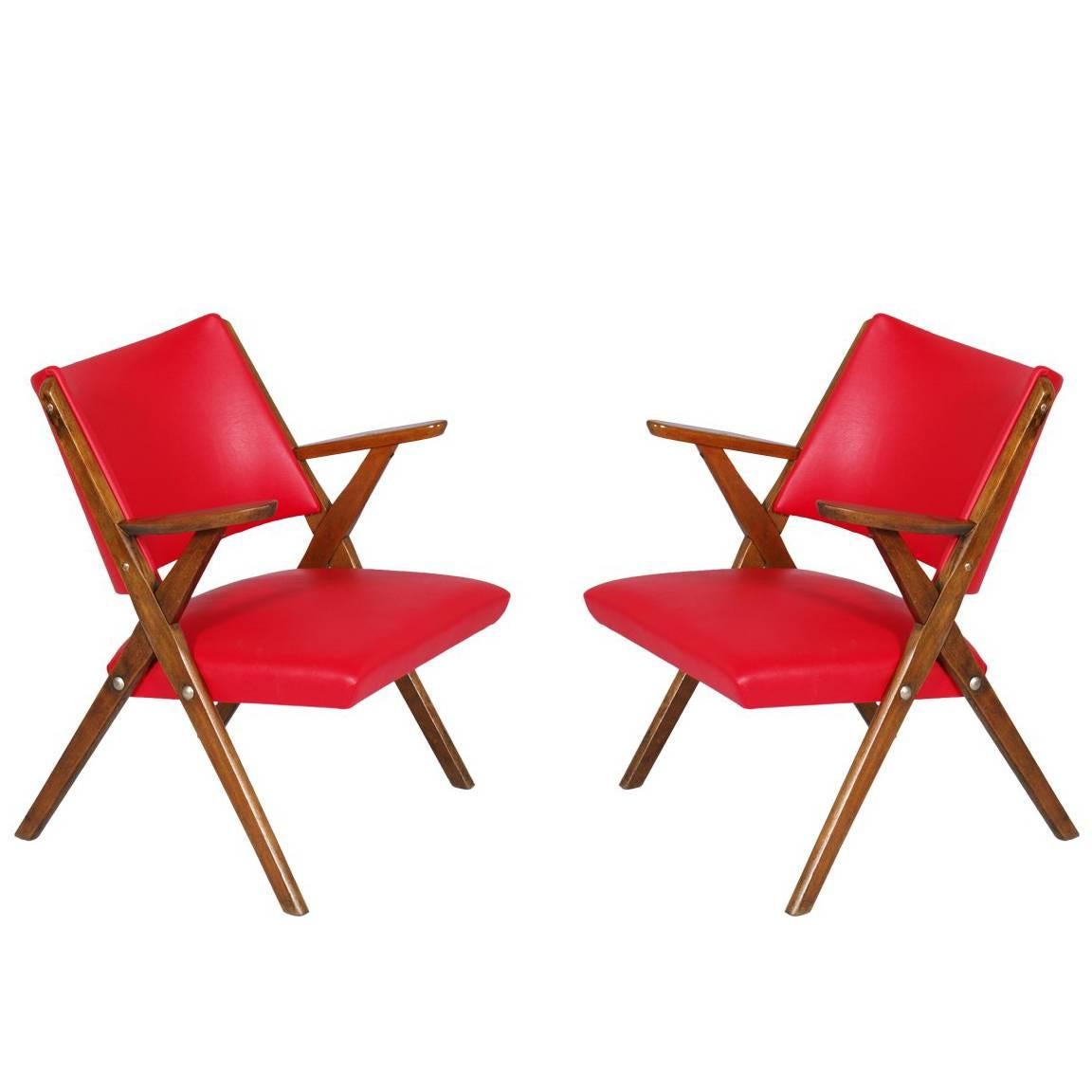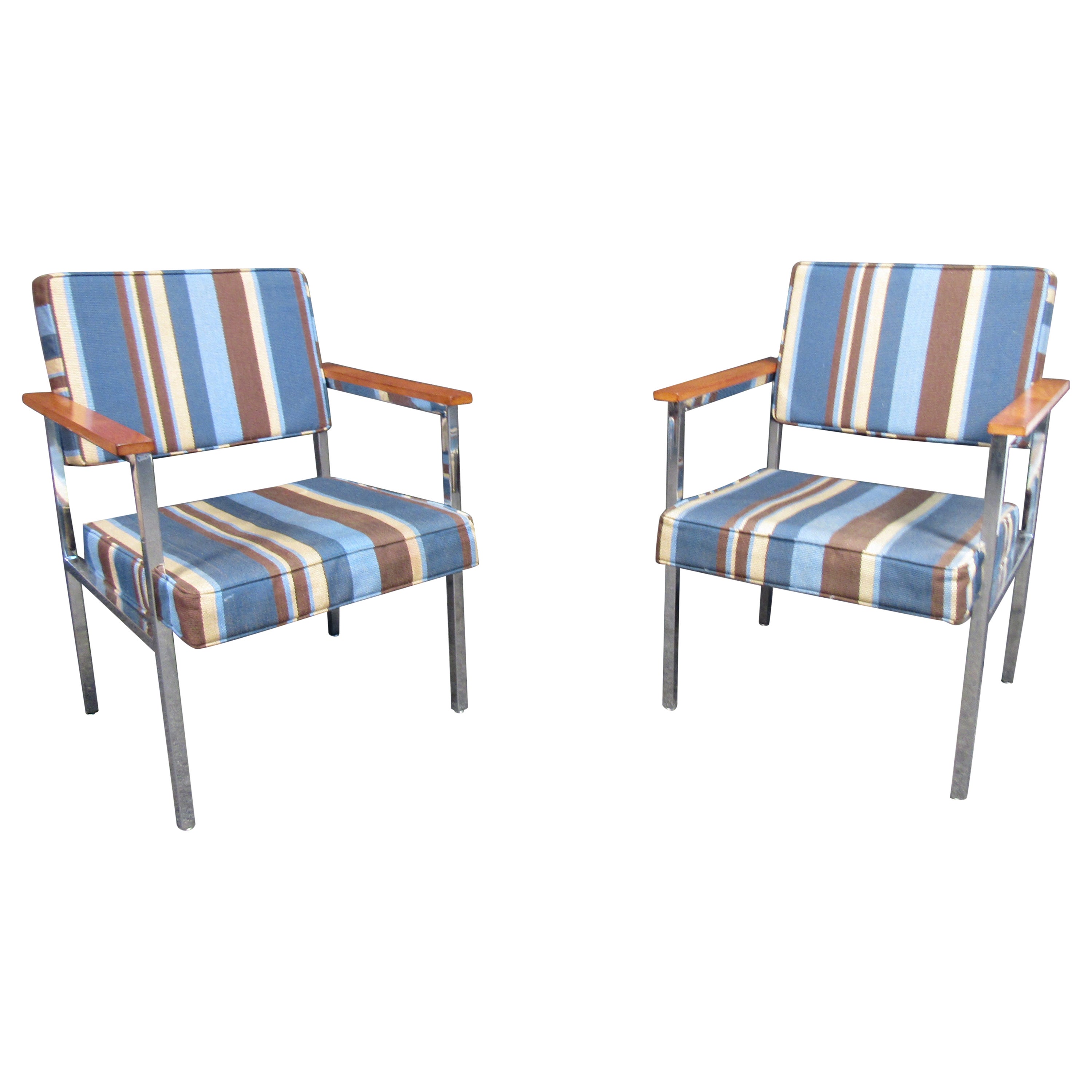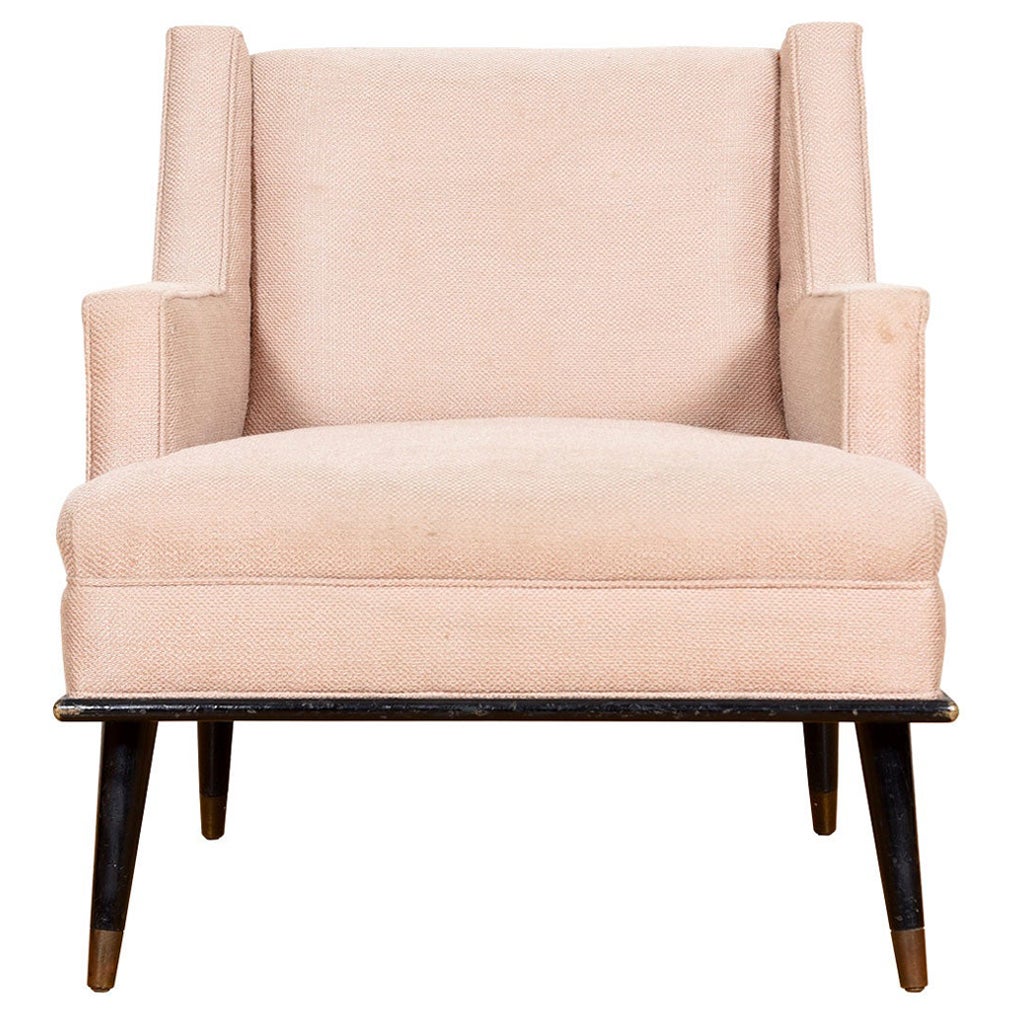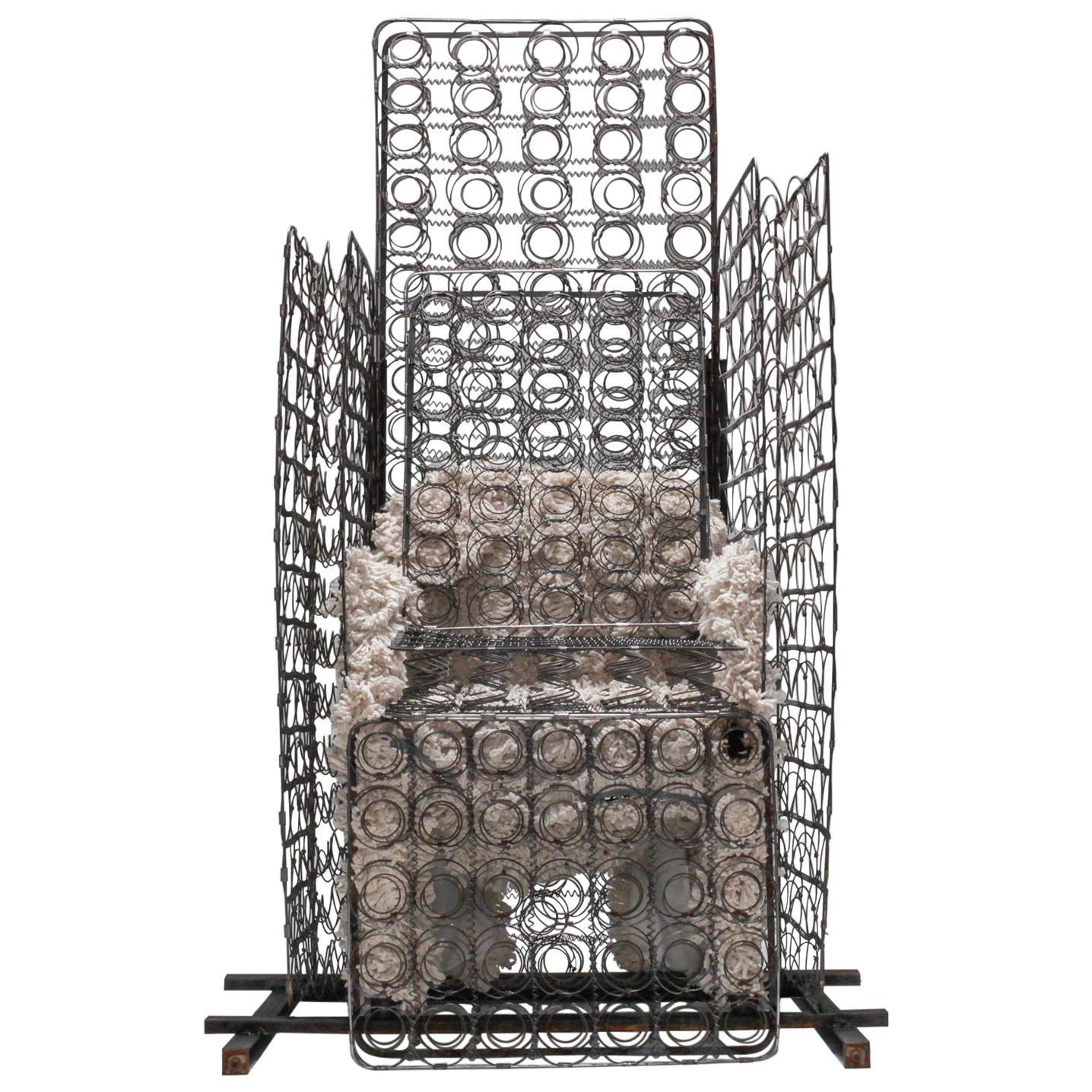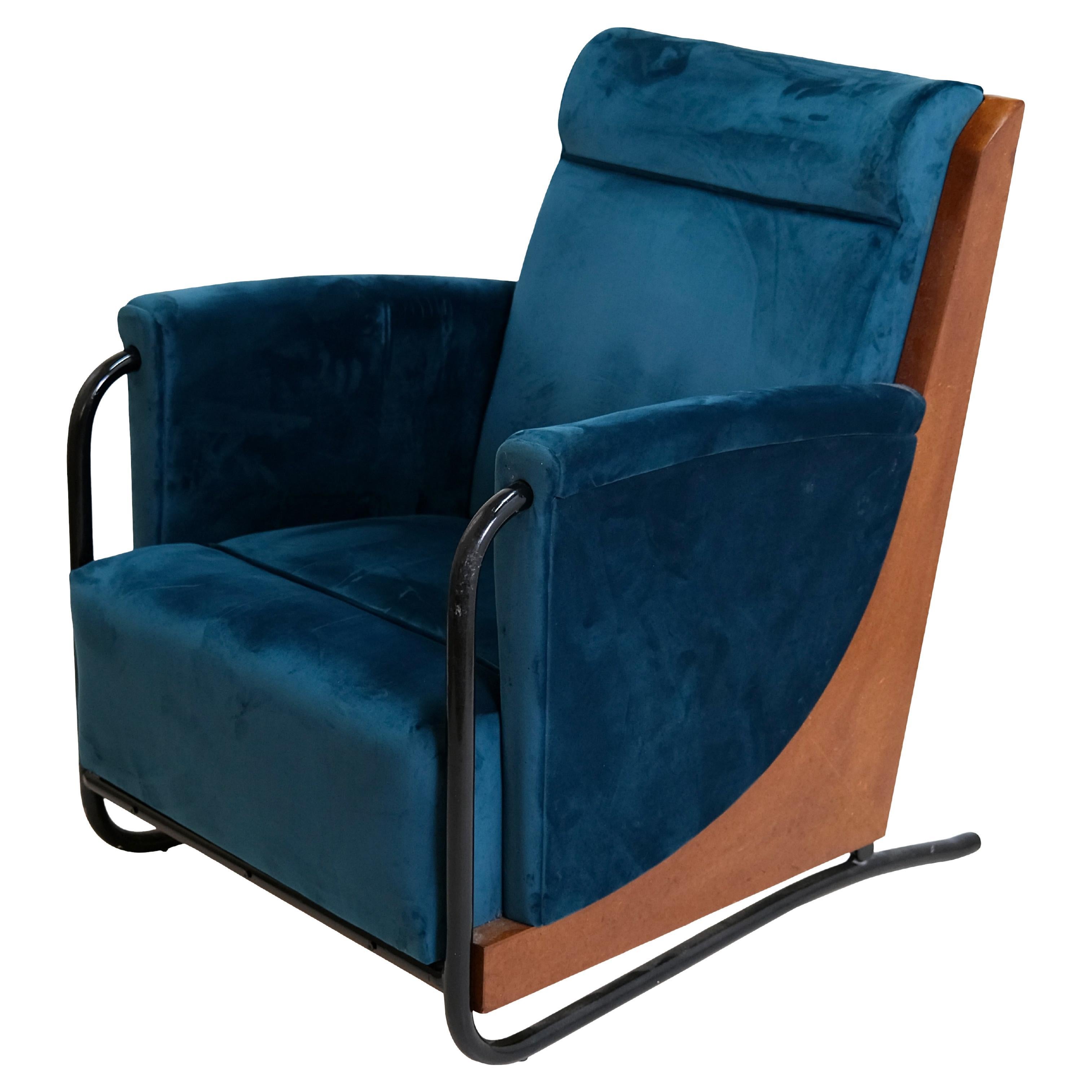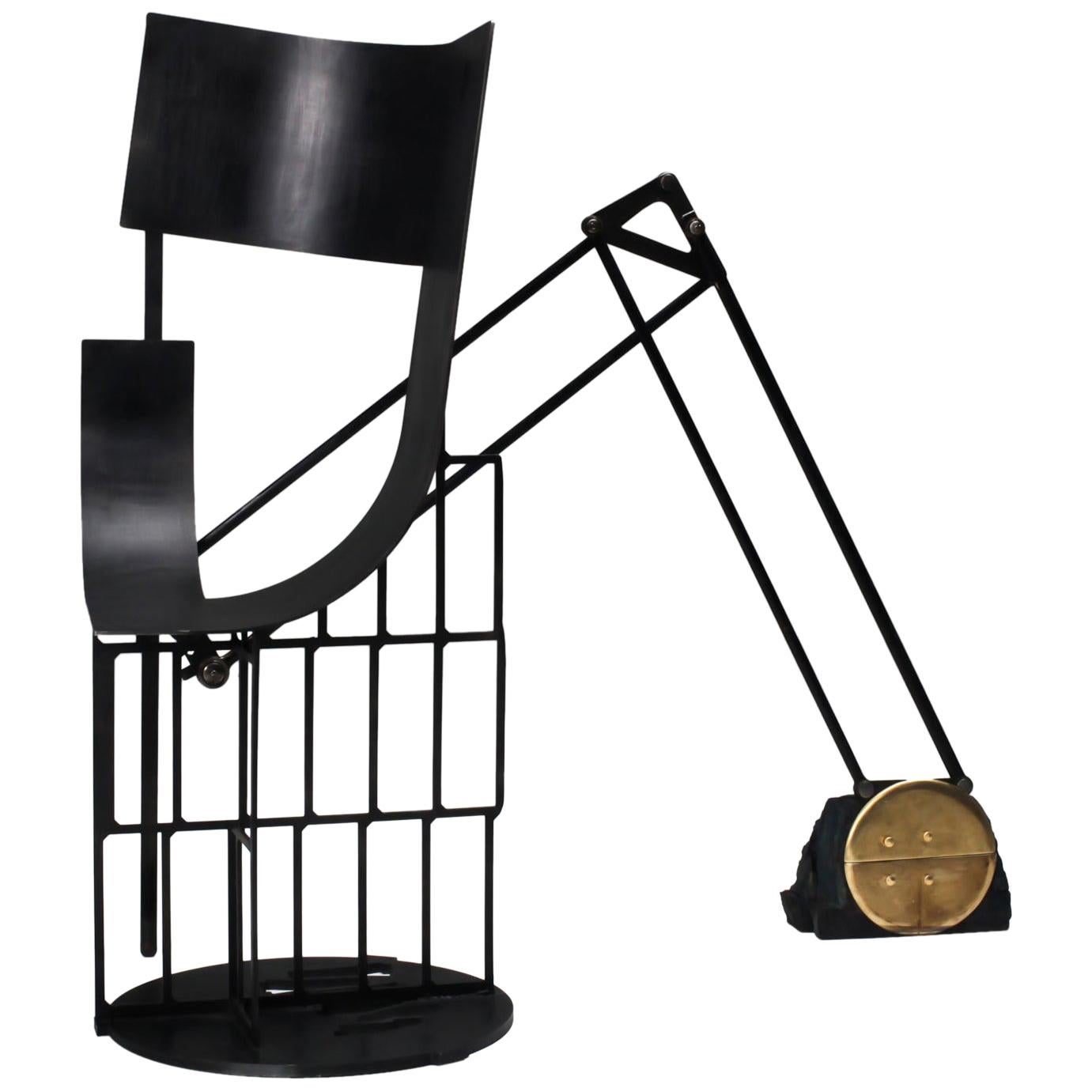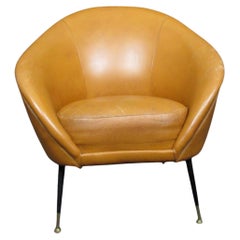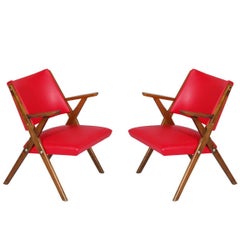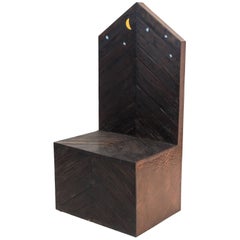
Functional Art by Lorenzini Mid-Century Modern Throne Chair
View Similar Items
Want more images or videos?
Request additional images or videos from the seller
1 of 11
Functional Art by Lorenzini Mid-Century Modern Throne Chair
About the Item
- Creator:Lorenzini (Designer)
- Dimensions:Height: 55.91 in (142 cm)Width: 21.26 in (54 cm)Depth: 23.23 in (59 cm)
- Style:Mid-Century Modern (Of the Period)
- Materials and Techniques:
- Place of Origin:
- Period:1980-1989
- Date of Manufacture:1980s
- Condition:Wear consistent with age and use.
- Seller Location:Antwerp, BE
- Reference Number:1stDibs: LU933412771692
About the Seller
4.8
Gold Seller
These expertly vetted sellers are highly rated and consistently exceed customer expectations.
Established in 2008
1stDibs seller since 2012
980 sales on 1stDibs
Typical response time: 10 hours
More From This SellerView All
- Functional Art by Lorenzini Mid-Century Modern Throne Chair, 1980sBy LorenziniLocated in Antwerp, BEFunctional Art; Sandro Lorenzini; Mid-Century Modern; Throne Chair; Wood; Artist; Italian Artist; Italy; Throne chair by Italian artist Sandro Lorenzini, made in Italy, circa 198...Category
Vintage 1980s Italian Mid-Century Modern Chairs
MaterialsCopper
- Throne Chair by LorenziniBy LorenziniLocated in Antwerp, BEUnusual and one-of-a-kind Throne chair, Sandro Lorenzini, Italy 1980s Solid wooden panels with ceramic stars and moon inserts. Copper side panels. A fantastic piece made in Italy ...Category
Vintage 1980s Italian Post-Modern Chairs
MaterialsCopper
- Functional Art Chair / Throne "'Spring Swab" by Lionel JadotBy Lionel JadotLocated in Antwerp, BECollectible design / Functional art, Lionel Jadot for Everyday Gallery, Belgium 2020 Born in Brussels in 1969, Lionel Jadot is an interior designer, artist, designer, filmmaker, adventurer. But all at once, preferably. Lionel Jadot is firing on all cylinders. ‘I never throw anything, I pick up everything. Not having a green thumb, I’m trying cuttings, weddings against nature. I never forget a line.’ He’s inviting us in subtle, off-beat worlds, on the edge of reality. Its material is made of dilated time. A wandering spirit, he seeks a protective balance in a hostile world. It is his constant questioning: what happens to the place where we live? For Lionel Jadot, everything is object, everything is history. He draws from other places, other times, and seeks what’s linking them. He sews, stitches, unpicks, blends materials, combines eras. He will enshrine some wood essence in metal, some mineral in a plant, the old in the new. ‘I take extra care to the joint between two materials.’ With him, there is always some play in the parts, as in a piece of machinery. From a kingdom to another, he provokes organic, viral growths, generating energy. Linking past and future, he never forgets a line. ‘I accumulate them.’ He’s inviting us in subtle worlds, off-beat, on the edge of reality. Are we in 1930 or in 2030? Both, no doubt. Its material is made of dilated time. The eye goes hand in hand with the ear. ‘When I walk into a place, I listen to the good (or bad) it does to me. An ineffable feeling.’ He recreates mutant buildings, like the future Royal Botanique, a 5 stars hotel housed in the Church of the Gesu, a former convent behind a 1940 façade. He talks about a ‘hotel object’, which he holds and turns around in his hand. A wandering spirit, he’s flirting with retro-futurism. The Jam, another hotel, is intended for urban travelers, fans of swiftness, fluidity and hospitality. He designs interiors as a set of objects: a motorcycle cut in concrete becomes a bar counter. He finds gothic cartoon echoes, from the likes of Moebius, Alejandro Jodorowsky, Enki Bilal, sets from Garage Hermétique and Blade Runner, a protective balance in a hostile world. Discovering Jadot’s little cosmos of collected and accumulated goods, it becomes clear that every element has its own story. I tried to collect them and in turn, devour them in the coming paragraphs. But first: the show is best experienced seated, barring the distinction between object of use and object of attention, they invite for different types of conversation. The seats, chairs, thrones all make us think of our own physical comportment, and of how the seat lends grandeur to the person sitting on it, by crowning its presence. The crackling floor, the felt walls and the diffuse light slow you down into an oddly absorbing environment, in which you are left puzzled. In the eclectic collages of objects, bits and pieces collected all over the world come together in ways practical, and logical, though possibly only in the artist’s mind. All his finds eventually seem to fall into place. Starting with the mere conception of a chair, rather than with a set-out plan or sketch, the works are intuitively construed out of an archive that one can only imagine the dimensions of. Things forgotten by others, precious for him, were all once designed for their own purpose. Here they find their fit as a base, a closing system or a balancing element. The first piece that opens the exhibition, the most throne-like of all seats in the show, builds around a chair of his grandmother, protected by mops, and harassed with bed springs. As you enter the space, you pass by a shell leaning over a yellow seat that stems from his old Mustang, and find a white stool piece with Mexican leather dog training whips— the white building blocks of which turn out to be dried molding material, as found and broken out of a bucket by workers every morning. Further, the stone piece that reminds one of the stone age, is indeed made of 400 million old rocks, and the soft seats are lent from construction, where these strokes of textile carry up the heaviest goods. In the corner — but as you walk this walk please be seated on any of the thrones and experience the work for a moment— the green fluffy cover is made by XXXX who remakes cartographies of warzones, one of which is here mounted on a flexible fishing chair. On an experience level, the conversation chair enhances self-confidence, while putting you literally in a good spot with the person you’re conversing with. The lamp perfectly shows the playful Cadavre Exquis...Category
2010s Belgian International Style Armchairs
MaterialsMetal
- Functional art Throne / Chair "Black Caterpillar" by Lionel Jadot, 2020By Lionel JadotLocated in Antwerp, BECollectible Design / Functional art, Lionel Jadot for Everyday Gallery, Belgium 2020 The chair made with scrap metal laser cuts and a prototype element of one of Lionel’s coffee table, the legs are made with the pantograph of a drawing table from the 30s, hung on an inked piece of Japanese wood from the 19th piece of furniture. Born in Brussels in 1969, Lionel Jadot is an interior designer, artist, designer, filmmaker, adventurer. But all at once, preferably. Lionel Jadot is firing on all cylinders. ‘I never throw anything, I pick up everything. Not having a green thumb, I’m trying cuttings, weddings against nature. I never forget a line.’ He’s inviting us in subtle, off-beat worlds, on the edge of reality. Its material is made of dilated time. A wandering spirit, he seeks a protective balance in a hostile world. It is his constant questioning: what happens to the place where we live? For Lionel Jadot, everything is object, everything is history. He draws from other places, other times, and seeks what’s linking them. He sews, stitches, unpicks, blends materials, combines eras. He will enshrine some wood essence in metal, some mineral in a plant, the old in the new. ‘I take extra care to the joint between two materials.’ With him, there is always some play in the parts, as in a piece of machinery. From a kingdom to another, he provokes organic, viral growths, generating energy. Linking past and future, he never forgets a line. ‘I accumulate them.’ He’s inviting us in subtle worlds, off-beat, on the edge of reality. Are we in 1930 or in 2030? Both, no doubt. Its material is made of dilated time. The eye goes hand in hand with the ear. ‘When I walk into a place, I listen to the good (or bad) it does to me. An ineffable feeling.’ He recreates mutant buildings, like the future Royal Botanique, a 5 stars hotel housed in the Church of the Gesu, a former convent behind a 1940 façade. He talks about a ‘hotel object’, which he holds and turns around in his hand. A wandering spirit, he’s flirting with retro-futurism. The Jam, another hotel, is intended for urban travelers, fans of swiftness, fluidity and hospitality. He designs interiors as a set of objects: a motorcycle cut in concrete becomes a bar counter. He finds gothic cartoon echoes, from the likes of Moebius, Alejandro Jodorowsky, Enki Bilal, sets from Garage Hermétique and Blade Runner, a protective balance in a hostile world. Discovering Jadot’s little cosmos of collected and accumulated goods, it becomes clear that every element has its own story. I tried to collect them and in turn, devour them in the coming paragraphs. But first: the show is best experienced seated, barring the distinction between object of use and object of attention, they invite for different types of conversation. The seats, chairs, thrones all make us think of our own physical comportment, and of how the seat lends grandeur to the person sitting on it, by crowning its presence. The crackling floor, the felt walls and the diffuse light slow you down into an oddly absorbing environment, in which you are left puzzled. In the eclectic collages of objects, bits and pieces collected all over the world come together in ways practical, and logical, though possibly only in the artist’s mind. All his finds eventually seem to fall into place. Starting with the mere conception of a chair, rather than with a set-out plan or sketch, the works are intuitively construed out of an archive that one can only imagine the dimensions of. Things forgotten by others, precious for him, were all once designed for their own purpose. Here they find their fit as a base, a closing system or a balancing element. The first piece that opens the exhibition, the most throne-like of all seats in the show, builds around a chair of his grandmother, protected by mops, and harassed with bed springs. As you enter the space, you pass by a shell leaning over a yellow seat that stems from his old Mustang, and find a white stool piece with Mexican leather dog training whips— the white building blocks of which turn out to be dried molding material, as found and broken out of a bucket by workers every morning. Further, the stone piece that reminds one of the stone age, is indeed made of 400 million old rocks, and the soft seats are lent from construction, where these strokes of textile carry up the heaviest goods. In the corner — but as you walk this walk please be seated on any of the thrones and experience the work for a moment— the green fluffy cover is made by XXXX who remakes cartographies of warzones, one of which is here mounted on a flexible fishing chair...Category
2010s European Chairs
MaterialsBrass, Steel
- Functional Art Chair / Stool "Plaster Whip" by Lionel JadotBy Lionel JadotLocated in Antwerp, BE"Plaster Whip" sculpture by Lionel Jadot A stool made of leftover plaster vats from a molding company, scrap metal, leather whips from the 1950s and a bodybuilder’s belt from the 1930s Collectible Design / Functional art , Lionel Jadot for Everyday Gallery, Belgium 2020 Born in Brussels in 1969, Lionel Jadot is an interior designer, artist, designer, filmmaker, adventurer. But all at once, preferably. Lionel Jadot is firing on all cylinders. ‘I never throw anything, I pick up everything. Not having a green thumb, I’m trying cuttings, weddings against nature. I never forget a line.’ He’s inviting us in subtle, off-beat worlds, on the edge of reality. Its material is made of dilated time. A wandering spirit, he seeks a protective balance in a hostile world. It is his constant questioning: what happens to the place where we live? For Lionel Jadot, everything is object, everything is history. He draws from other places, other times, and seeks what’s linking them. He sews, stitches, unpicks, blends materials, combines eras. He will enshrine some wood essence in metal, some mineral in a plant, the old in the new. ‘I take extra care to the joint between two materials.’ With him, there is always some play in the parts, as in a piece of machinery. From a kingdom to another, he provokes organic, viral growths, generating energy. Linking past and future, he never forgets a line. ‘I accumulate them.’ He’s inviting us in subtle worlds, off-beat, on the edge of reality. Are we in 1930 or in 2030? Both, no doubt. Its material is made of dilated time. The eye goes hand in hand with the ear. ‘When I walk into a place, I listen to the good (or bad) it does to me. An ineffable feeling.’ He recreates mutant buildings, like the future Royal Botanique, a 5 stars hotel housed in the Church of the Gesu, a former convent behind a 1940 façade. He talks about a ‘hotel object’, which he holds and turns around in his hand. A wandering spirit, he’s flirting with retro-futurism. The Jam, another hotel, is intended for urban travelers, fans of swiftness, fluidity and hospitality. He designs interiors as a set of objects: a motorcycle cut in concrete becomes a bar counter. He finds gothic cartoon echoes, from the likes of Moebius, Alejandro Jodorowsky, Enki Bilal, sets from Garage Hermétique and Blade Runner, a protective balance in a hostile world. Discovering Jadot’s little cosmos of collected and accumulated goods, it becomes clear that every element has its own story. I tried to collect them and in turn, devour them in the coming paragraphs. But first: the show is best experienced seated, barring the distinction between object of use and object of attention, they invite for different types of conversation. The seats, chairs, thrones all make us think of our own physical comportment, and of how the seat lends grandeur to the person sitting on it, by crowning its presence. The crackling floor, the felt walls and the diffuse light slow you down into an oddly absorbing environment, in which you are left puzzled. In the eclectic collages of objects, bits and pieces collected all over the world come together in ways practical, and logical, though possibly only in the artist’s mind. All his finds eventually seem to fall into place. Starting with the mere conception of a chair, rather than with a set-out plan or sketch, the works are intuitively construed out of an archive that one can only imagine the dimensions of. Things forgotten by others, precious for him, were all once designed for their own purpose. Here they find their fit as a base, a closing system or a balancing element. The first piece that opens the exhibition, the most throne-like of all seats in the show, builds around a chair of his grandmother, protected by mops, and harassed with bed springs. As you enter the space, you pass by a shell leaning over a yellow seat that stems from his old Mustang, and find a white stool piece with Mexican leather dog training whips— the white building blocks of which turn out to be dried molding material, as found and broken out of a bucket by workers every morning. Further, the stone piece that reminds one of the stone age, is indeed made of 400 million old rocks, and the soft seats are lent from construction, where these strokes of textile carry up the heaviest goods. In the corner — but as you walk this walk please be seated on any of the thrones and experience the work for a moment— the green fluffy cover is made by XXXX who remakes cartographies of warzones, one of which is here mounted on a flexible fishing chair. On an experience level, the conversation chair enhances self-confidence, while putting you literally in a good spot with the person you’re conversing with. The lamp perfectly shows the playful Cadavre Exquis...Category
2010s European Chairs
MaterialsLeather, Plaster
- Functional Art 'SLV Chair' by Lionel Jadot, Belgium, 2021By Lionel JadotLocated in Antwerp, BEDesign Miami; Art Design; Art Basel; Atelier Lionel Jadot; Everyday Gallery; Contemporary; Belgian Design; Belgian Art; Chair; Functional Sculpture; Artwork; Collectible Design; Ever...Category
2010s Belgian Organic Modern Chairs
MaterialsAluminum
You May Also Like
- Mid-Century Modern Club ChairsLocated in Brooklyn, NYThis lovely pair of Mid-Century Modern club chairs feature comfortable vintage upholstery and a handle in the back for convenience. The thick chrome legs and modern design make them ...Category
Vintage 1970s Mid-Century Modern Club Chairs
MaterialsChrome
$1,207 / set - Mid-Century Modern Orange Leather Club ChairLocated in Brooklyn, NYWonderful orange leather club chair with a terrific vintage mod aesthetic! Broken-in orange leather seating provides plush comfort in style ...Category
Mid-20th Century Mid-Century Modern Club Chairs
MaterialsBrass
$840 Sale Price30% Off - Mid-Century Modern Italy Dal Vera Easy ChairLocated in Vigonza, PaduaDal Vera- Made in Italy circa 1950s, in walnut and leather restored Measure in cm: H 70/40, W 60, D 48 Dal Vera production made in Italy 1950sCategory
Mid-20th Century Italian Mid-Century Modern Chairs
MaterialsLeather, Walnut
$2,187 / item - Mid-Century Modern Teak and Metal Club ChairsLocated in Brooklyn, NYThese unique club chairs feature rectangular teak arm rests on a sturdy metal frame. The stripped blue upholstery will compliment any setting you decide to pair them with. Please c...Category
Antique Early 1600s Mid-Century Modern Club Chairs
MaterialsMetal
$1,470 Sale Price30% Off - Mid-Century Modern Upholstered Club Chair by Milo Baughman for James, IncBy Milo BaughmanLocated in Kensington, MDGorgeous transitional club chair with mid century flair by Mil Baughman. Fully upholstered chair on black splayed legs.Category
Mid-20th Century American Mid-Century Modern Club Chairs
MaterialsUpholstery
- Mid Century Savonarola ChairsLocated in Sag Harbor, NYPair of midcentury Roman inspired Savonarola chair in iron with brass finials and ornamentation. Newly re-upholstered in a black and white stripe.Category
20th Century Italian Mid-Century Modern Chairs
MaterialsIron, Brass
$9,000 / set
Recently Viewed
View AllMore Ways To Browse
Furniture Velvet Chairs
Right And Left Chair
B52 Table
Pair Black Gold Chairs
1940 Folding Chair
Mid Century Spaghetti
Indian Head Chair
Set Of Outdoor Barstools
Painted Ladder Back Chairs
Custom Victorian Style Chair
Leather Banquet
Chateau Dax
1920 Folding Chair
Spanish Renaissance Renaissance Chairs
Iron Vanity Chair
Three Legged Counter Stool
Queen Anne Needlepoint
Breuer Breuer Black
